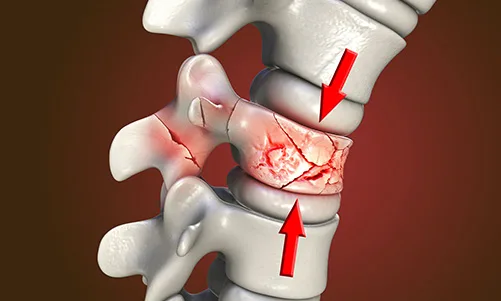A vertebral compression fracture is a break in the vertebrae (bones that make up the spine). It can result from natural weaning of the bones with age, injuries or accidents, and tumours. It can affect any part of the spine, though it is most common in the thoracic spine (middle spine section). It is also referred to as spinal compression fractures.
Consult with the best orthopaedics for vertebral compression fracture treatment at the CK Birla Hospital.

Vertebral compression fractures are small cracks in the vertebrae which can cause the spine to weaken and collapse. The fracture can cause loss of height, sudden back pain that worsens with movement, numbness in the back, muscle weakness or spasm, tenderness at the fracture site, and more. People aged over 50 years, individuals with a history of compression fracture, and females who have been through menopause are at higher risk of developing this fracture.
Note: These costs are approximate and can vary based on factors such as the hospital’s location, the surgeon’s expertise, and the patient’s specific condition.
We cannot prevent all the causes of vertebral compression fractures, however, we can prevent fractures caused by osteoporosis (the most common cause of compression fracture).
An orthopedist can help diagnose vertebral compression fractures. The specialist may check for the spine’s alignment, height, and posture. Plus, they may also assess signs of nerve damage and look for signs of muscle weakness, numbness, tingling, etc.
Recovery from vertebral compression fracture treatment typically takes 8 - 12 weeks, with gradual pain relief and improved mobility over time. It is advised to avoid strenuous activities, wear a brace if prescribed, and begin light physical therapy once approved. Long-term care may include bone-strengthening medication, dietary changes, and fall prevention to avoid future fractures.
While sitting with a fractured vertebra, maintain a straight posture, use a supportive chair, and avoid prolonged sitting.
For a vertebral compression fracture, a back brace is typically worn for 6 to 12 weeks, depending on the severity of the fracture.
Yes, it’s possible to walk after a vertebral compression fracture, though it also depends on the severity and cause of the fracture.